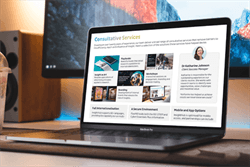FlexMR’s CEO, Paul Hudson, took a stroll into a chapter of his past and presented as a guest lecturer to a current cohort of Lancaster University Management School students. Paul brought the topic of Customer Salience to the table, advocating the practice of putting customers at the heart of business decisions.
As well as university students there were also some of FlexMR’s Research and Customer Success teams in attendance, looking to learn more about the current Customer Salience position, challenges and opportunities for further application. Here are a few thoughts they took away from the experience:
A Trending Lack of Customer Salience
There is an over-promotion of brand salience in marketing studies, and a distinct lack of Customer Salience in business studies according to Mike Connor, one of FlexMR’s Business Development Officers, noting that:
“I think the marketing being taught about in academia likes to focus on brand salience because it's tangible and you can measure it. The importance of brand salience was really impressed upon me as a student in my Masters programme, and of course, it is, but I think talking about the flip-side and giving students another way of framing the idea of how businesses make decisions based on customer insights will have far more practical applications once they become marketers and business professionals.”
| Tweet This | |
| FlexMR's Paul Hudson guest lectured at Lancaster University Management School to communicate the importance of Customer Salience, and here are some key learnings they took away. |
Mike also believes that “the sheer drop off in customer value from theory to practice is alarming. Understanding that most senior executives know something is important, yet know they don't have that as a hallmark of their brand is really quite silly when you say it out loud.”
The Customer Gap is “a variation of the well-known ‘say-do’ dilemma that describes a consistently significant difference between intention and action”. This is what Mike is describing and what Paul introduced in his lecture, with a startling visualisation of some incredibly important facts:

With so many stakeholders understanding that customer insights are crucial to business success, it’s a wonder why so few actually follow through and embed Customer Salience into their organisations.
The Dangerous Top Table Analogy
Being present at the top table for important decision-making is something that is impressed on all business professionals who wish to be a part of great change, but is it correct in the way it presents the concept of decision-making processes in a business? There are important decisions that are made every day outside of the c-suite, and as such any insights professional needs to think about how they bring insights into those conversations as well. Charlotte Duff, FlexMR’s Client Relationship Manager agrees, saying:
“The concept of the top table is a dangerous one for improving decision making around an organisation; by reinforcing the belief of it being the responsibility of the C-Suite, and those who sit at the “top table”, to make decisions, it doesn’t promote network insights nor challenge existing siloing of data. For a organisation to be responsive to market intelligence and insight they need to be better prepared to disseminate the growing knowledge.”
Not only this, but there are other significant barriers to service that prevent teams from feeling like they have the option for making high-level decisions, and thus need the c-suite to take control in this way. Paul explains in his slide below:

However, while these challenges might need higher-level intervention to overcome, there is still a need for teams to take more ownership of their own decision-making processes, using insights to make decisions and control what they can before higher-level sign offs are needed. Even using insights to pitch the right way forward to management could make more of an impact than you think.
The Challenge of Action and Preconceptions
As much as we all want to say we’re working towards bringing value to customers, what that actually means to each business professional and department in an organisation will be different in many different ways. Each team’s priorities and objectives, customer exposure and connection level, and more will skew their view on ‘what the customer wants’, and this impacts their decision-making processes on a fundamental level.
Sophie Grieve-Williams, FlexMR’s Design Manager, was also at Paul’s lecture and noted that “we often bring our pre-conceived notions into action rather than focusing on customer data/salience. For a graphic design point of view it's interesting because sometimes it's really hard not to put what you think will be best into effect, when a customer is telling you what they want directly. This particular point in Paul’s lecture was a good wake up call to reassess my own preconceptions and how they influence the decisions I make.”
While understanding that action is the only way forward to fix preconceptions, understanding that there are also barriers to action is essential. These barriers to action are the biggest hurdles to positive change, and each business professional, team, and company will face a unique combination of different challenges to overcome.

However much the barriers to action stand in our way, customer insights do present an opportunity for us to plan our next steps and move beyond the obstacles with only some risk and relative ease.
Whose Responsibility Is It to Uphold Customer Salience?
While there is a call for everyone in an organisation to rise to the challenge of Customer Salience, and to become well-versed in the attaining and using of customer insights in all decisions, this is a movement that will need to be instigated by someone. This is a movement still gathering momentum, which will need to be maintained by a team of advocates dedicated to being the driving force behind such prevalent change, which begs the question: “Whose responsibility is it to ensure this process works? This is not policed, or monitored by any one person, and it is unclear who this should sit with.”
Rachel adds that this becomes even more challenging with alternative focuses in each team; “Often decision-makers become preoccupied with their own tasks, creating a lack of network insight. Thus, the hierarchical structure of many businesses often leads to a break in the chain of communication. If information is not shared and sits in the mind of one / few people alone, it is impossible to create a well-informed culture, based on customer salience and upholding the 'lost pillar of marketing', market orientation.”
It could be argued that a task force of sorts should be set up with members hailing from all teams across the organisation to be that driving force on all levels, and this would likely be the best case scenario as long as those members were themselves dedicated to creating a culture of Customer Salience. Especially if this is a business that doesn’t use customer insights as well as they should, because this would be a great change to the foundations of the company. As Paul’s next slide shows, there is a long way from using insights to creating a culture of Customer Salience:

The Business Case for Customer Salience
Even with all of these considerations and key learnings from Paul's lecture, pitching the case for Customer Salience to businesses who already undervalue and defund market research will be a difficult task. Coming up with a business case or strategy outline for Customer Salience in your organisation will be the first steps towards the process, and luckily, we have our Customer Salience Toolkit to help insight teams jump start their journey.


















